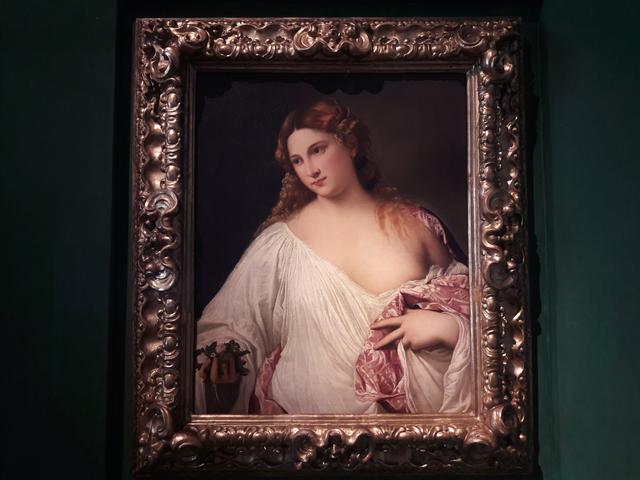Flora

A young woman emerges from the brown background of the painting, holding a bouquet of spring flowers, consisting of violets, rosebuds and jasmine. She is dressed in an ancient style, with a bright white robe that slides down over her right shoulder, offering a glimpse of her chest, while her head rests gently on her left shoulder as she looks out of the painting. Her face, with its delicate features, meets all the canons of Renaissance beauty of the 16th century: luminous and pale skin, rosy cheeks and a face framed by long copper blonde hair, the typical hair color of painted women. by Titian (hence the term "red Titian").
The subject has been identified as "Flora", the nymph bride of Zephyr, whose story is of Greek origin, told to us by Ovid. This identification dates back to Joachim von Sandrart, a Dutch historian who saw the work around 1635 in the collection of Don Alfonso Lòpez, Spanish ambassador in Amsterdam. Don Alfonso Lòpez sold the painting to Archduke Leopold Wilhelm of Austria, and it was moved to Florence in 1793 as part of an exchange of works of art between the Imperial Belvedere Gallery in Vienna and the grand dukes of Tuscany. The fame of this painting is shown in the many engravings made from the 16th century onwards.
The painting is part of research into the image of female beauty that began at the beginning of the century by Giorgione's "Laura", dated 1506 and now in the Kunsthistorisches Museum, Vienna. On a par with other representations of women of particular beauty and sensuality, which form a subgenre of painting, established around Venice and known as "Belle" [Beauties], the image is not an unequivocal allusion to Flora, animator of the licentious . Celebrations of ancient Rome, but rather of feminine beauty, capable of combining modesty and voluptuousness.
© Tourblink